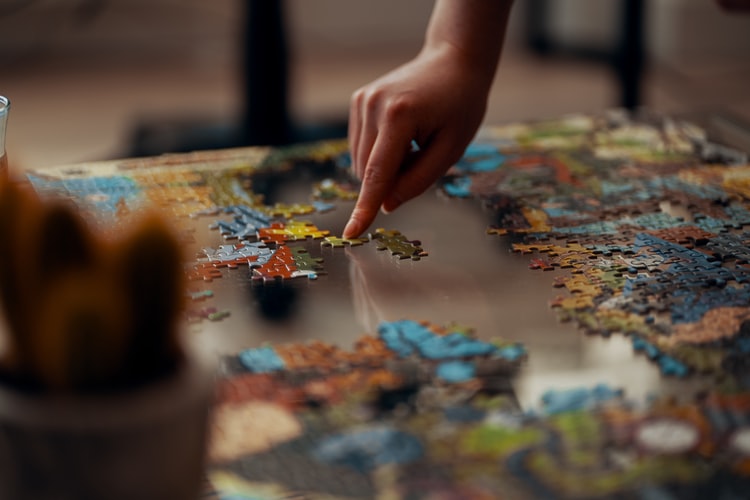Jigsaw puzzles have educational value for children of all ages. This is because to complete a jigsaw, a child needs to use several distinct aspects of the thinking process, explains Martin Jackson from Art & Fables Jigsaws.
A baby learns to identify objects by their contour and not what position the object is in. A bed is a bed, regardless of if it is upright, on its side, or upside down – to a tiny baby, it makes no difference. The simple puzzles made for young children help develop more polished and defined skills of recognition.
One of the primary things a young child will learn when doing jigsaws is that it does matter which way up the pieces are to fit in the space. A typical early childhood puzzle is made from wood with a picture and has spaces where the pieces fit to create the picture. For example, there could be a separate car shape within a street scene, a bus shape, and a van shape that complete a puzzle. These puzzles are typically sturdy as the first reaction of a child is to try to force the piece into the space, taking no notice of the shape. With adult supervision, the young child learns to manipulate the piece until it does fit exactly.
A child can draw several learning experiences from these fundamental puzzles. Firstly, it’s the hand-eye coordination to manage the puzzle piece into position. Getting the part in also involves observing the shape of the hole and the shape of the puzzle piece. At first, the children deal with the problem by trial and error. The example and assistance of an adult start to set the thinking process. The child begins to apply spatial awareness and thinking direction as well as physical. This comes, however, after the child learns to put the pieces in correctly through memory and trial and error.
The role of the grown up at this stage is crucial. The conversation about the image, discussing, and demonstrating the correct method to complete it, accelerates the child’s learning process. Puzzles can create a great opportunity to increase vocabulary and recognise objects and circumstances outside the child’s immediate environment. The fact that a child learns that the piece only fits one way is a pre-reading skill. Like with the piece of a puzzle, a letter needs to be the right way up and not backward, or upside down in a word.
You can purchase these early childhood puzzles in varying degrees of difficulty as the child’s spatial and reasoning skills become more advanced. The child also learns through jigsaw puzzles the recognition of colours and shapes with adult conversation, increasing the chance of the child’s understanding and development. The red shape only fits in the red hole. This matching activity develops early reading skills.
It is good to introduce a new puzzle and do it together with a child at first. Make this a fun social time rather than making it feel like a lesson. Do the puzzles together with the child long enough to hold the child’s interest but be prepared to move on to another activity. Eventually, when the child’s skill and confidence have increased, he will want to do it independently. With support and praise, the child will practice until the skills are familiar. Then is the time to include puzzles with a greater challenge.
Puzzles help develop the reasoning and deduction process of thinking. As well as abilities such as spatial awareness, matching, and sorting. Above all, jigsaw puzzles present an excellent opportunity for language development and a happy social interaction period with your child.
